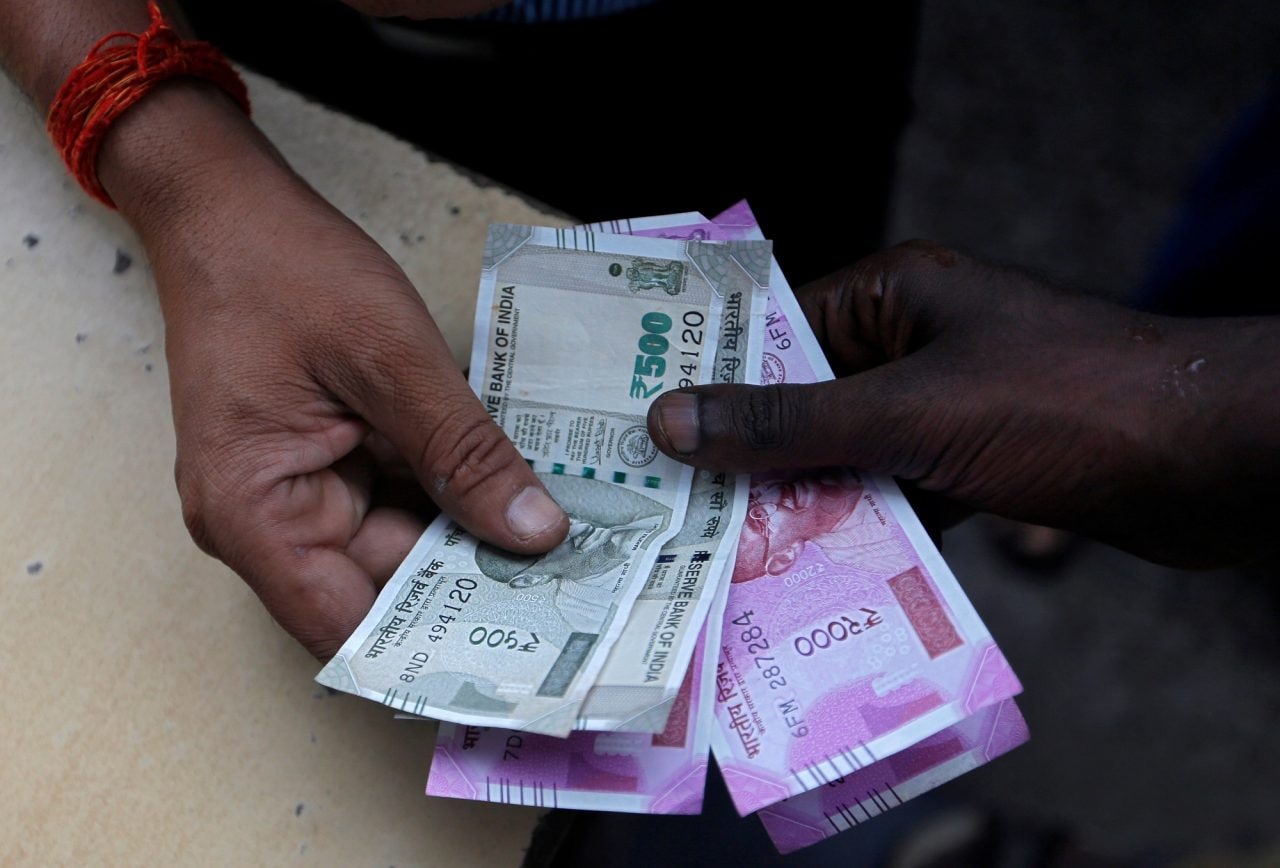Why companies are firing employees while there is an acute shortage of talents?

KV Prasad Jun 13, 2022, 06:35 AM IST (Published)
 Listen to the Article (6 Minutes)
Listen to the Article (6 Minutes)
Summary
With so many companies cribbing about shortage of talent, surprisingly there seems to be massive layoffs around as well. So there are many questions such as how is it even possible and what needs to be done to resolve this, if at all it is even possible, among others. Well, the answer is not a simple or straight one, but a combination of economic conditions around the world as well as in India, the status of our education sector, as well as societal disruptions due to the 4th industrial revolution.
Is skill shortage and layoffs a zero-sum game, in which no wealth is created or destroyed? Such a game, which may have as few as two players or as many as millions of participants, is the opposite of win-win situations or lose-lose situations. But obviously in a two-player game, whatever one player wins, the other person loses.
With so many companies cribbing about shortage of talent, surprisingly there seems to be massive layoffs happening around as well. How is it even possible? And what needs to be done to resolve this, if at all it is even possible?
Well, the answer is not a simple or straight one. It is a combination of economic conditions around the world as well as in India, the status of our education sector, as well as societal disruptions due to the 4th Industrial Revolution.
The Job Paradox
It is true that despite the talent shortage across various industry sectors in India, youngsters are finding it difficult to access employment. The research reports over the past 7-8 years have shown a macro trend that a small proportion of Indian graduates are actually employable. This lack of job-ready talent pool is a cause of concern.
For example, the Indian education system churns more than 15 lakh engineers every year. At this capacity, it is one of the major engineering nations in the world. It should have been the engineering capital and innovation hub for the world. Yet it is not.
These very engineering graduates struggle to find jobs. According to various surveys, only 15 percent to 20 percent of these graduates find jobs in core engineering sectors, and that too they are employed in IT, ITES or electronic sectors. Rest of the engineers end up in non-engineering sectors or jobs.
If only we introspect honestly, we will accept that it’s because of the outdated content that’s being taught, and the unimpressive methodology of educational delivery. Currently our system focuses on technical writing skills and memorisation instead of developing street-smart and industry-needed skill sets and technical competence.
As of now, the education sector is highly regulated. Regulatory decay of sorts, over the decades, has allowed the ugly head of academic jealousy, petty politics to damage the moral fabric of what should have been the pillar of GDP-growth, and what should have aided in nation-building.
Hopefully NEP (New Education Policy) will change this to a market mechanism and allow for better quality standards, to serve student community better. Only that can help the industry get better trained ready-talent, without meaningless bureaucratic interventions. As of now, one of the factors that hurt job availability being paired with educational skillsets is this : Education and learning don’t have any correlation. We have formally educated graduates, but with not much learning or skills.
Retraining Our Teachers
Currently our education system offers irrelevant or outdated content – in many cases, both. Critically the teachers who teach the subjects need upgradation of their own knowledge and skills. The teaching profession, which was once seen as a honourable and respectful one, is sadly being seen as “you become a teacher, when you can’t get any other job” position.
NEP aims to revamp our education pedagogy, to inculcate multiple skills to each individual, as part of the mainstream education system. For this to be successful, we also need to upgrade our teachers development program.
Education framework will give respectability that skilling is a formal part of it and not an alternative to mainstream education. Teacher upskilling and industrial training modules and also having adjunct faculties who work in their domain sectors will help bring market content.
Teaching involves hunger for knowledge, passion, commitment and hard work. Teaching is not a substitute for not getting any other job! At the same time, not every successful manager can be a good teacher or vice versa. How do we train sufficient teachers to impart knowledge? How can we ensure that the teaching community stays relevant with the latest knowledge? What they learnt a decade or two or even three ago, won’t be cutting edge for today’s industry survival, leave alone the future?
Students preference of subjects will be influenced by what Industry onboards as essential knowledge set along with critical skill sets as added bonus. To deliver these, we need academia to work along with industry faculty to offer skills demanded by the markets. This is where the industry has to start being involved in academics. Despite all the rhetoric about shifting industry needs, the industry does not involve itself much with the academic world. It is hard to find senior professionals to spend time teaching the next generation — either as visiting faculty or mentors. This is no more a good-to-have, but an urgent must-have.
Economic Velocity
Past few months, there have been inflationary trends observed globally. With inflation, and with worries about the continued Russian war on Ukraine, as well as geo-political disorders, companies are tightening their costs. In the major global client-markets like the US, UK, economic woes seem to be mounting, in general.
Also importantly, not all the industrial sectors are witnessing the same amount of pain or gain. So there is no one sector that can claim to be a representative of the whole economy. This is why we have confusion that some sectors seem to be doing well like travel, hospitality, food etc., and we assume that the economy is doing well. This seems confusing because we then hear of poor corporate results from certain sectors. In addition, we hear of layoffs and cost tightening.
Let us remember that one of the large employers in India is the IT / ITES sector. Predominantly, it does comparatively lower-value-technology services as an outsourced/ onshore model. It uses the dollar-rupee arbitrage as a cost benefit to offer those services (competitively priced) to the global clients. India is still a long way to go in offering cutting-edge technology consulting services, which is priced far higher.
The industry might still take umbrage to what it used to be called just a few years ago – body shopping. Yet it may not be far from the blunt truth to ask if we are simply being world’s cyber coolies. Of course there should be no dignity of labour and hence anything earned by fair hard work is fine. But then, these skill sets are replicable by some other country who can learn the skills, offer it cheaper and quicker. There lies the challenge for the industry.
4th Industrial Revolution
With the pace of Digital India, we have seen that Technology and industrial disruptions can be positive to citizenry benefits. Yet the same innovations also can change the way skill sets are being used, and the way the job market seeks different human abilities. These tech innovations also can influence behavioural changes. While humans have adapted themselves to newer normal with every industrial disruption over the centuries, the Fourth Industrial Revolution is a bigger disruption. It has enormous potential to do positive things for humankind. And have a trail of downside risks including disruption in conventional methods of employment, thereby drastically reducing the number of jobs available in the ecosystem and increasing the urgency to retool the entire education and skilling, thinking and methodologies.
There are research reports that indicate that 80 percent of jobs or skills that would be needed in seven years hence, have not known, developed or shaped yet. This sort of disruption where skills used today could become completely redundant or priced lower than current acceptance is a scary one. How does one prepare a large population with contemporary knowledge and skill sets that enable them to be relevant to the global talent marketplace?
Talent Needs Monetisation
It’s just not about talent – it’s about talent that can be monetised. No wonder, that a skilled (but not even formally educated or qualified) electrician or carpenter might have higher earnings than an educated graduate. This is a reflection of the demand and supply gap in the market.
We hardly have a large ecosystem of research capabilities in our universities. Our intellectual property rights and ability to get them is slow. No doubt that we have sharp minds, and eager youngsters. Unless we start respecting intellectual property rights, we will continue to lose talent to better economic prospects.
Human beings, much like viruses, operate on the principles of natural selection. Only those who have strong ‘mutation’ capabilities’ and lack rigidity, will survive in the long run. Those wired for this natural selection will automatically adapt – HR’s ‘learning calendar’ notwithstanding! So if we cannot inculcate intellectual hunger in our youngsters, it’s our own undoing.
–Srinath Sridharan is a Corporate Advisor and Leadership Coach
Read his other articles here

Elon Musk forms several ‘X Holdings’ companies to fund potential Twitter buyout
3 Mins Read
Thursday’s filing dispelled some doubts, though Musk still has work to do. He and his advisers will spend the coming days vetting potential investors for the equity portion of his offer, according to people familiar with the matter

KV Prasad Journo follow politics, process in Parliament and US Congress. Former Congressional APSA-Fulbright Fellow










 Listen to the Article
Listen to the Article  Daily Newsletter
Daily Newsletter












